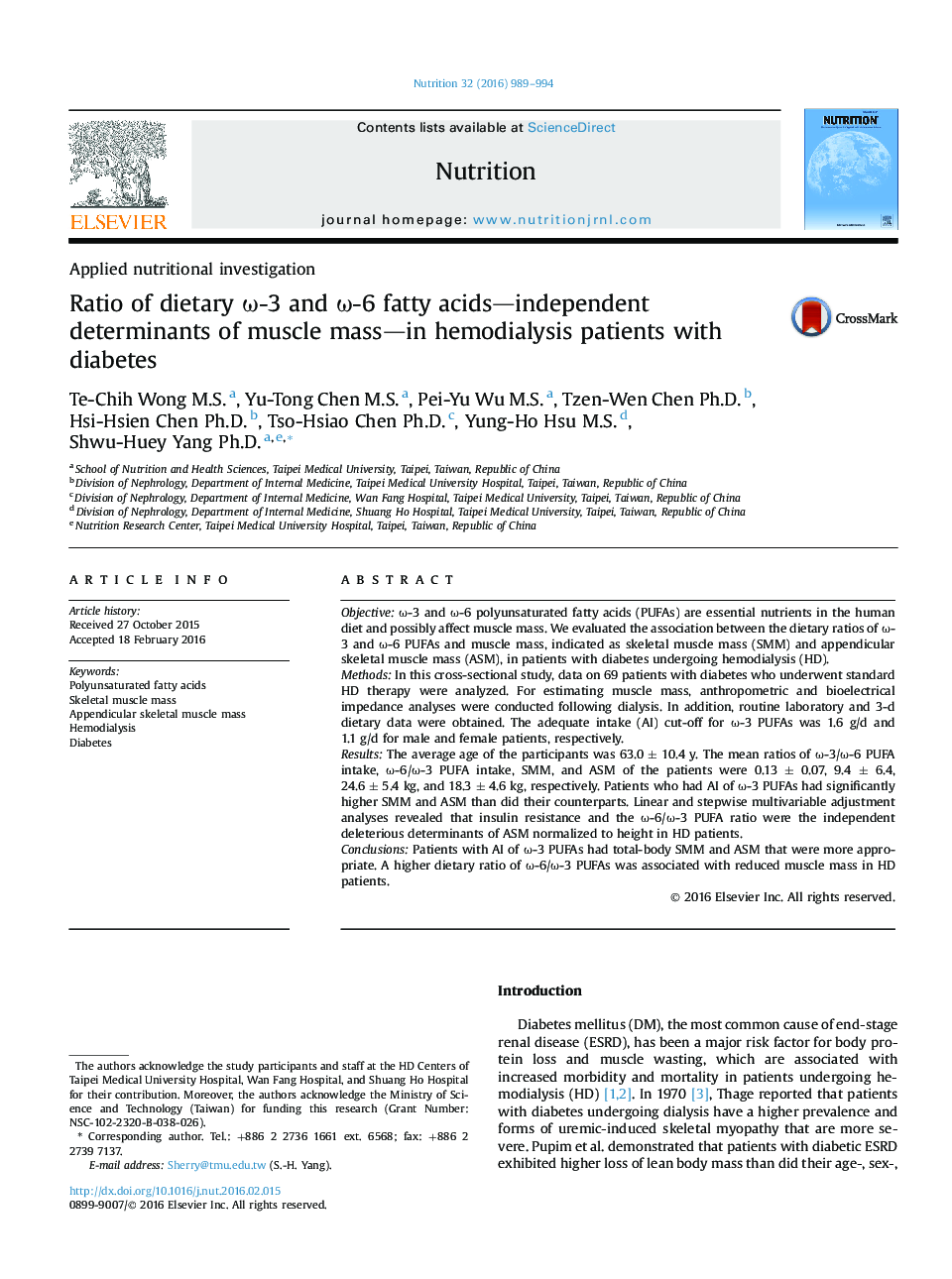| Article ID | Journal | Published Year | Pages | File Type |
|---|---|---|---|---|
| 3276102 | Nutrition | 2016 | 6 Pages |
•We investigated the association between dietary fatty acids (FAs) and muscle mass.•An adequate intake of n-3 FAs associated with higher muscle mass.•Ratio of n-6/n-3 FAs was the independent determinants of muscle mass.•Ratio of dietary fat can be used as a strategy in prevention of muscle wasting.
Objectiveω-3 and ω-6 polyunsaturated fatty acids (PUFAs) are essential nutrients in the human diet and possibly affect muscle mass. We evaluated the association between the dietary ratios of ω-3 and ω-6 PUFAs and muscle mass, indicated as skeletal muscle mass (SMM) and appendicular skeletal muscle mass (ASM), in patients with diabetes undergoing hemodialysis (HD).MethodsIn this cross-sectional study, data on 69 patients with diabetes who underwent standard HD therapy were analyzed. For estimating muscle mass, anthropometric and bioelectrical impedance analyses were conducted following dialysis. In addition, routine laboratory and 3-d dietary data were obtained. The adequate intake (AI) cut-off for ω-3 PUFAs was 1.6 g/d and 1.1 g/d for male and female patients, respectively.ResultsThe average age of the participants was 63.0 ± 10.4 y. The mean ratios of ω-3/ω-6 PUFA intake, ω-6/ω-3 PUFA intake, SMM, and ASM of the patients were 0.13 ± 0.07, 9.4 ± 6.4, 24.6 ± 5.4 kg, and 18.3 ± 4.6 kg, respectively. Patients who had AI of ω-3 PUFAs had significantly higher SMM and ASM than did their counterparts. Linear and stepwise multivariable adjustment analyses revealed that insulin resistance and the ω-6/ω-3 PUFA ratio were the independent deleterious determinants of ASM normalized to height in HD patients.ConclusionsPatients with AI of ω-3 PUFAs had total-body SMM and ASM that were more appropriate. A higher dietary ratio of ω-6/ω-3 PUFAs was associated with reduced muscle mass in HD patients.
